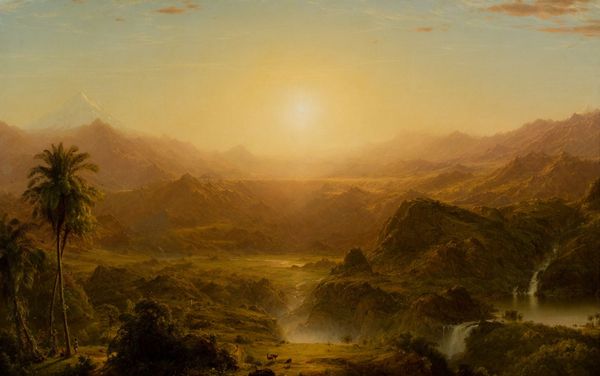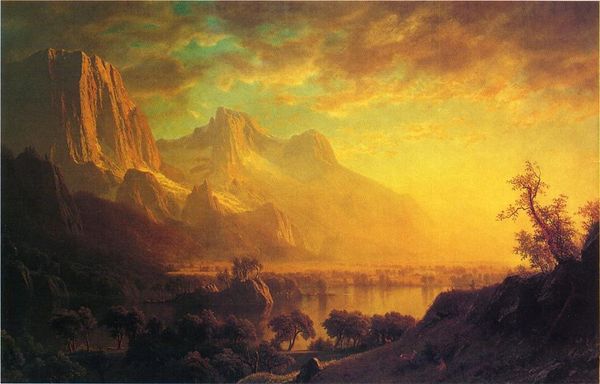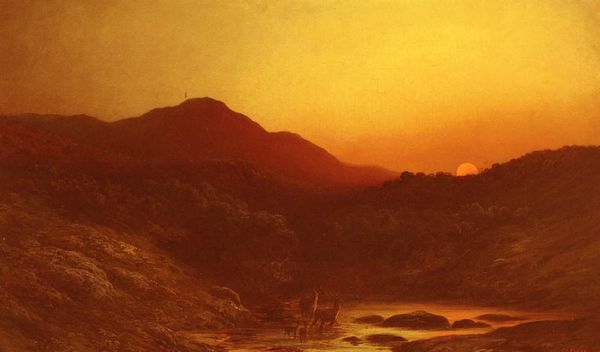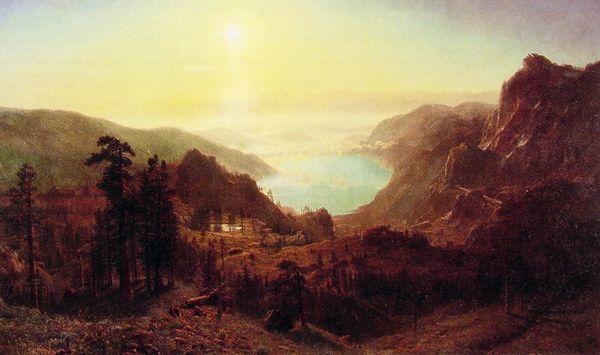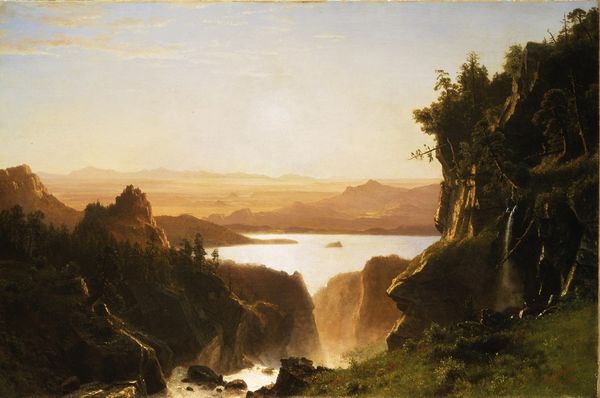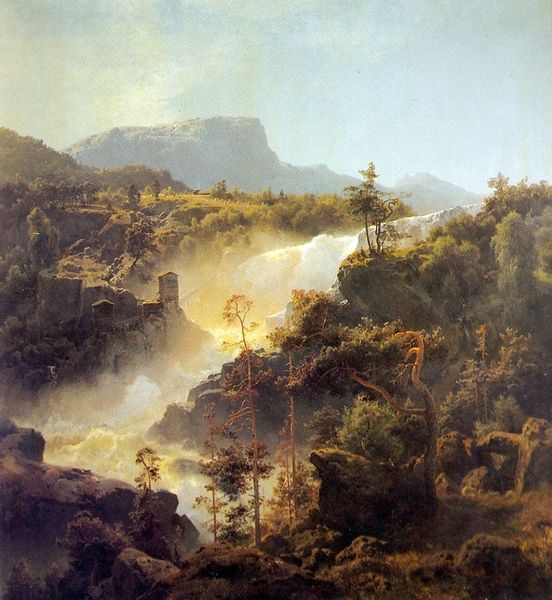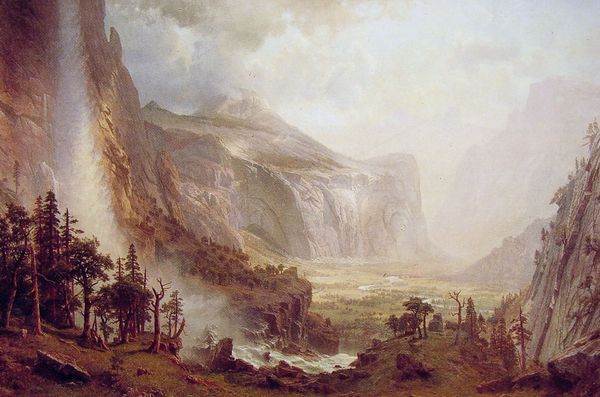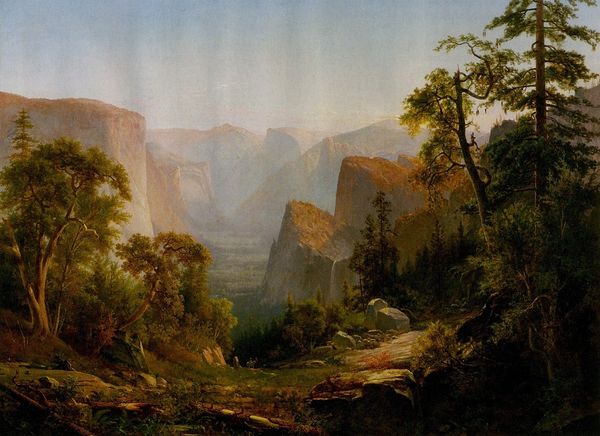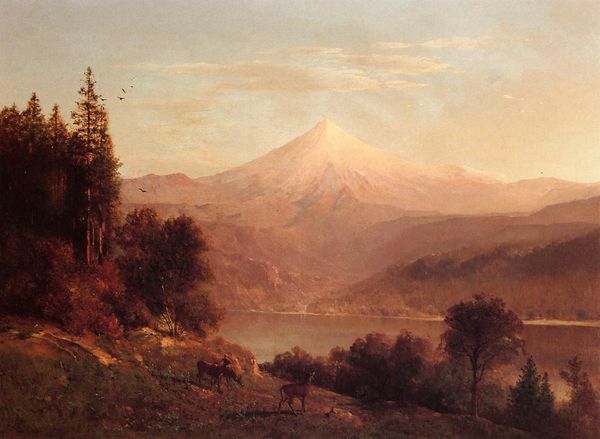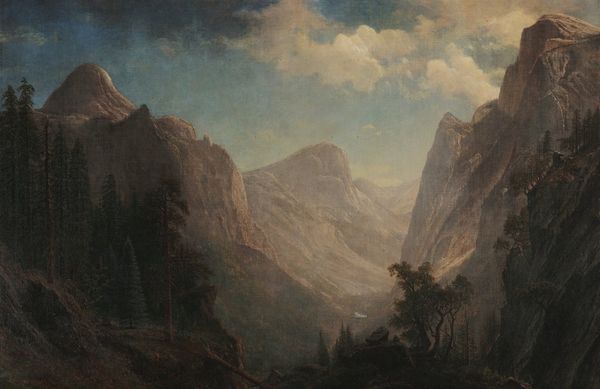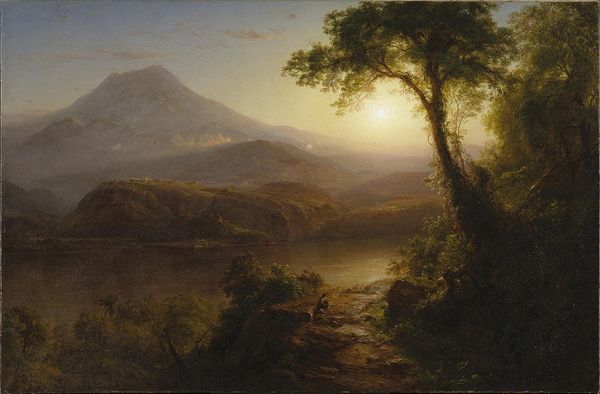
Copyright: Public domain
Editor: So, this is Frederic Church’s “The Andes of Ecuador,” painted in 1855 with oil on canvas. It feels like this incredibly vast, almost overwhelming vista. The details are amazing! What do you see in this piece, in terms of its structure? Curator: I find the artist's strategic use of light particularly compelling. Notice how the intense, almost blinding sun acts as a focal point. It not only bathes the landscape in a radiant glow, but it also dictates the values throughout the composition, creating a series of receding planes. The subtle gradations from light to shadow are used to organize visual interest. Consider how it divides the landscape into distinct spatial zones, further emphasizing the painting’s considerable depth and scale. The artist truly leads the eye using contrast and value. Do you perceive that also? Editor: Absolutely, that glowing light makes everything so dreamlike and romantic. It feels unreal somehow, especially contrasting with the realistically rendered foliage in the foreground. The symmetry of the mountain structures is a really intriguing technique as well, a formal way of representing nature. Curator: Precisely! The strategic positioning of the darker foliage in the lower corners and its movement in and out of focus serves as a frame, inviting the viewer to engage with the vista depicted in the composition. How would you say the artist uses this tension between meticulous details and expansive space? Editor: The artist wants the viewer to feel included in a sweeping, immense and panoramic landscape. I see now how carefully planned all these elements are to emphasize the vastness, it has little to do with capturing any moment in time, more about organizing our focus and thinking around visual depth and form. Thanks for pointing it out. Curator: Indeed! These landscape components create both realism and transcendence. I, too, have learned from your interpretation of nature as symmetry, not verisimilitude.
Comments
No comments
Be the first to comment and join the conversation on the ultimate creative platform.
